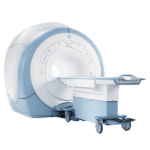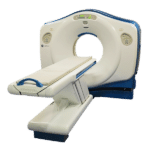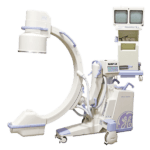X-rays set the foundation for many of us to detect early abnormalities, and most importantly, get a second chance at life
A while back, we wrote an article on interesting facts about the invention of x-rays. Since then, I have received a number of requests to put up more interesting facts about radiology history. Since many new creations have been born following the discovery of the x-ray, we have narrowed down the list to our favorite fun (and important) facts about the radiology history.
X-rays not only have a phenomenal use in the radiology world, but they have been discovered and enhanced by some of the most phenomenal people. They have set the foundation for many of us to detect early abnormalities, and most importantly, get a second chance at life.
A Happy Accident
My favorite radiology fun fact is still the scientific breakthrough of x-rays being an accidental invention. While studying the path of electricity, Wilhelm Roentgen noticed that the image sticking to a paper contained details not found in an ordinary photograph. After further investigation, he took his first actual x-ray of his wife’s hand. Following Roentgen’s discovery, Dr. Harvey Cushing further advanced the technology for diagnostic clinical x-rays. In 1902, he began performing ground-breaking work in surgery, including brain surgery, using the technology to help him locate and remove tumors.
From the Tesla to the First MRI
Nikola Tesla was known as a brilliant inventor, assisting in inventions such as remote controls, generators, radio, and more. However, it was his discovery of the rotating magnetic field and invention of Tesla units in the late 1800s that makes him such an important figure in medical imaging history. Though MRI technology wasn’t used until later, it was thanks to the Tesla unit that the use of magnetics was able to reach new heights in medicine. MRI machines are calibrated in Tesla units, with the strength of a magnetic field generally measured in Tesla as well. In 1977, the first MRI exam was performed. Though it took almost five hours to produce just one image, Dr. Raymond Damadian, and fellow colleagues labored for years to do what many said could not be done. Today there are thousands of MRI scanners in the country with images being produced in seconds as opposed to hours.
Saving the Ta-Tas
Mammography is most commonly used in medical imaging for breast cancer detection. Dr. Jacob Gershon-Cohen was one of the first doctors to utilize the yet unproved technology in the 1950’s. He conducted a five year study that screened thirteen hundred healthy women every six months (colleagues even questioned why he performed mammograms on healthy women). His astounding results indicated that while 92 of the healthy women were diagnosed with non-malignant tumors, 23 were diagnosed with malignant tumors. The results of the study started an era of early detection and improved survival, and he received numerous awards and prizes for his work and dedication. His determined advocacy convinced physicians about the merits of mammograms and how important it was for healthy women to be screened. Recent studies show that each screening mammogram reduced the risk of breast cancer death by 31% and has saved millions of breast cancer patients!
Get Started
Request Pricing Today!
We’re here to help! Simply fill out the form to tell us a bit about your project. We’ll contact you to set up a conversation so we can discuss how we can best meet your needs. Thank you for considering us!
Great support & services
Save time and energy
Peace of mind
Risk reduction
Fluoroscopy Then & Now
Years after Roentgen’s discoveries, the fluoroscope was born. Early models were simple cardboard funnels closed with a thin layer of fluorescent metal salt; the images produced were not nearly as detailed as they are today. Due to the limited light produced from the fluorescent screens, radiologists were required to sit in a darkened room where the procedure was performed, adjusting their eyes to the dark and increasing their sensitivity to the light. Red adaptation goggles were developed to address the problem for adaptation to the dark, but quickly became obsolete when the development of x-ray image intensifiers and the television cameras in the 50’s revolutionized fluoroscopy. Over the years, modern improvements in screen phosphors, image intensifiers and even flat panel detectors have resulted in increased image quality and minimal radiation doses.
Who Do We Thank for Detecting Radioactivity?
Safety became a concern as scientists and others who worked with x-rays began dying unexpectedly. Two time Nobel Prize winner, Dr. Marie Curie, and her husband, discovered the radioactive metals: radium and polonium. Curie found that the harmful properties of x-rays were able to kill tumors, but made a mindful decision not to patent methods of processing radium or its medical applications. Curie eventually died of leukemia, ironically caused by her repeated exposure to radioactive material. Due to her work and discoveries in the field, safety advancements were made in radiography and radiology that protect both patients and caregivers.
The Fast CAT
During the course of its history, CT/CAT scans have continued to become more patient-friendly, and scan times have gotten even faster, allowing for more anatomy in less time. Furthermore, research and development have resulted in excellent image quality at the lowest possible x-ray dose. The original CT systems were intended for head imaging only, but whole body systems with larger openings became available in 1976. The first CT took hours to acquire raw data for a single slice, and took days to reconstruct a single image from that raw data. Today, multi-slice CT systems can collect up to 4 slices of data in about 350 milliseconds, and reconstruct a 512 x 512-matrix image from millions of data points in less than a second!
Sending X-Rays to Outer Space
X-ray technology typically focuses on detecting small details inside the human body, but in 1979, the technology was turned towards larger targets when NASA used x-ray technology to take amazing images of outer space. NASA helped pioneer the development of x-ray astronomy and continues to operate today.
If you have any questions about radiology equipment, or would like to share more facts with us, we would love to hear from you!
Posted by:
Bobby Serros
President and CEO
407.438.7847
bobbys@amberusa.com



